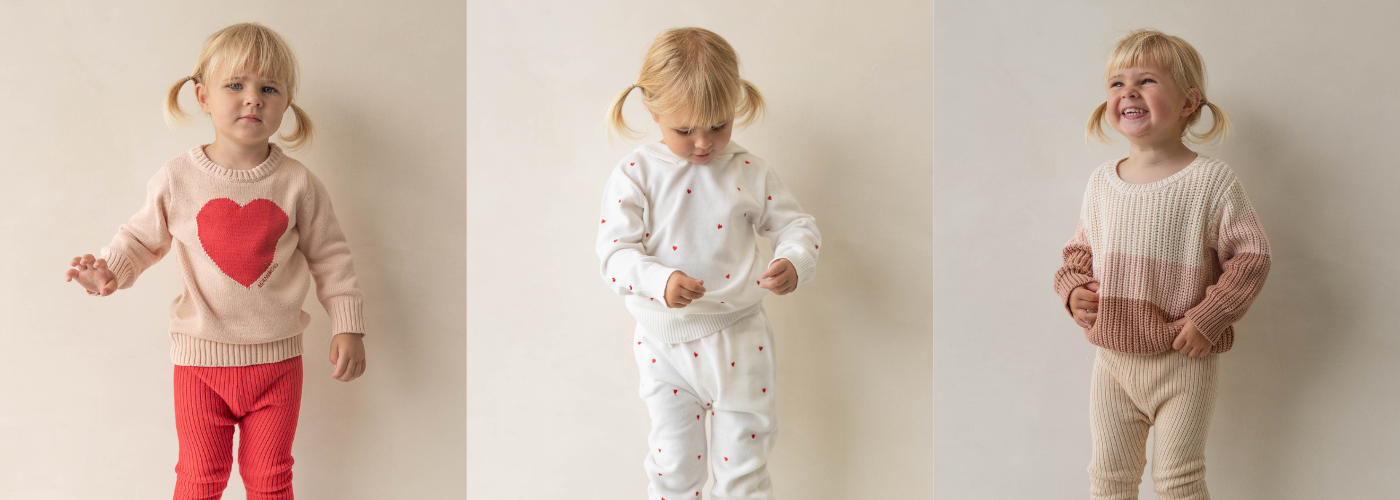
Importance of eco-friendly children's clothing
Eco-friendly children's clothing is crucial for our environment and our kids' health. It reduces the use of harmful chemicals that can be found in traditional clothing, making it safer for the little ones.Organic cotton is often used in eco-friendly clothing, which is grown without pesticides or synthetic fertilizers, benefiting both the environment and the children wearing it. By choosing eco-friendly clothing, you support sustainable and ethical practices in the fashion industry, promoting a better future for our kids.
Benefits for kids and the environment
Eco-friendly children's clothing isn't just good for the environment; it's great for kids too! Here's why:
- Healthier for Kids: These clothes are often made with organic materials that are gentle on a child's skin, reducing the risk of allergies and skin irritations.
- Sustainable Practices: By choosing eco-friendly clothing, you're supporting sustainable practices that help protect the environment for future generations.
- Durable and Long-Lasting: Despite being kind to the planet, these clothes are also durable and can withstand the wear and tear of active kids, saving you money in the long run.
Rise of sustainable fashion in children's clothing
Manufacturers are increasingly embracing sustainable practices for children's clothing. The trend towards eco-friendly clothes for kids is growing due to a focus on reducing environmental impact and promoting ethical manufacturing processes.Organic cotton, recycled materials, and non-toxic dyes are some of the key elements in sustainable children's fashion. This shift not only benefits the planet but also ensures that the clothes are safe for young ones to wear.
Materials used in eco-friendly kids' clothing
Eco-friendly children's clothing often usesorganic cotton,bamboo fabric, andrecycled materials. These materials are chosen for their sustainability and minimal environmental impact. Organic cotton is grown without harmful chemicals, making it safer for both the environment and the children wearing it. Bamboo fabric is known for being soft, breathable, and biodegradable. Recycled materials, such as plastic bottles or fabric scraps, reduce waste and promote a circular economy. These materials are not only safer for kids but also help in reducing the impact of clothing production on the planet.
How to identify eco-friendly children's clothing
To identify eco-friendly children's clothing, look for brands that useorganic cotton,bamboo, orrecycled materials in their clothes. Check if the clothing is certified byGOTS,Oeko-Tex, orFair Trade organizations. Avoid brands that useharmful chemicals in the manufacturing process ornon-biodegradable materials. Additionally, look for clothing that isdurable andethically made to ensure it is truly eco-friendly.
Brands leading the way in sustainable kids' fashion
Everlane: Known for their transparency in the fashion industry, Everlane offers a wide range of eco-friendly children's clothing options that are both stylish and sustainable.
Mini Rodini: This brand is committed to using organic cotton and recycled materials in their fashionable designs for kids, ensuring a sustainable approach to kid's fashion.
Patagonia: Patagonia is not only popular for outdoor clothing but also for their sustainable kids' collection made from environmentally friendly materials, perfect for eco-conscious parents.
Cost comparison with conventional kids' clothing
Eco-friendly children's clothing can be a bit pricier upfront compared to conventional kids' clothes. However, in the long run, they can save you money as they are often made with higher-quality materials that last longer and require fewer replacements.Organic cotton clothes, for example, may seem pricey at first glance, but they are more durable and tend to withstand multiple washes better than conventional cotton.Bamboo clothing, while soft and eco-friendly, can also come with a higher price tag initially. Investing in eco-friendly children's clothing not only benefits the environment but also can save you money over time by reducing the need for frequent replacements.
Tips for caring for eco-friendly children's clothing
To make your eco-friendly children's clothing last longer, wash them in cold water and avoid using a dryer. Choose detergents that are gentle and free from harsh chemicals to protect the fabric and the environment. When storing these clothes, opt for breathable and eco-friendly storage solutions like cotton bags instead of plastic. Remember, the more care you put into maintaining your kids' eco-friendly clothes, the longer they will stay vibrant and sustainable.
Impact on child's health and well-being
Eco-friendly children's clothing is gentle on your child's skin as it is free from harmful chemicals that can cause irritation or allergies. The use of organic materials ensures that your child is not exposed to potentially harmful substances commonly found in traditional clothing. By choosing eco-friendly options, you are promoting a healthier lifestyle for your child.
Conclusion: Shifting towards a greener future in kids' fashion
When it comes to children's fashion, embracing eco-friendly clothing is crucial for a sustainable future. By opting for eco-friendly children's clothing, you are not only supporting the environment but also ensuring the well-being of your child. The shift towards a greener future in kids' fashion involves choosing materials that are organic, sustainably sourced, and free from harmful chemicals. This conscious choice promotes a healthier lifestyle for both children and the planet, setting a positive example for the next generation to follow.
















